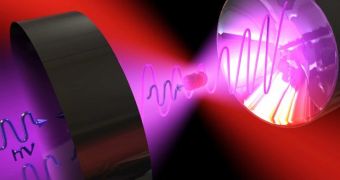Quantum physics is undoubtedly one of the most interesting and well-developed areas of research at this point. The two main abilities that quantum systems exhibit – superposition and entanglement – are currently being investigated by a large number of scientists around the world. However, the experts find it difficult to determine the nature of these two phenomena as they increase the size of the general systems in which they act. This is mostly caused by interactions between the system itself and the noise of its background, as in everything around it.
Now, experts at the California Institute of Technology (Caltech) propose new methods of observing the effects that these two events have on increasingly larger systems. A study detailing the new hypothesis was published in the latest online issue of the respected journal Proceedings of the National Academy of Sciences (PNAS). In it, the Caltech team explains that even something as small as the thermal vibrations of the environment can penetrate the system and destroy its fragile quantum properties.
Superposition basically refers to the fact that a certain quantum particle can exist in two states at the same time. Applied to the case of the qubit (quantum bit), the basis of a new generation of computers, it means that the structure can operate in a “1,” a “0,” and a “1 and 0” state at the same time. On the other hand, entanglement allows particles to share the same traits and behave in the same way, even if they are not in direct contact with each other, and are separated by huge distances. Albert Einstein dubbed entanglement a “spooky action at a distance.”
The new method that the Caltech team is proposing for separating the two quantum effects from their background is actually fairly simple. The system consists of an optical trap, as in a laser, and a small sphere, about 100 nanometers in diameter, made of clear materials such as fused silica. When subjected to the laser, the optical forces that are generated push the silica sphere to the area where the light is most intense, and the nanoscale system becomes trapped at that location. Because it levitates, the sphere is completely separated from its surroundings, therefore the Caltech team believes that quantum phenomena inside should emerge easily. The idea was demonstrated only in theory.

 14 DAY TRIAL //
14 DAY TRIAL //